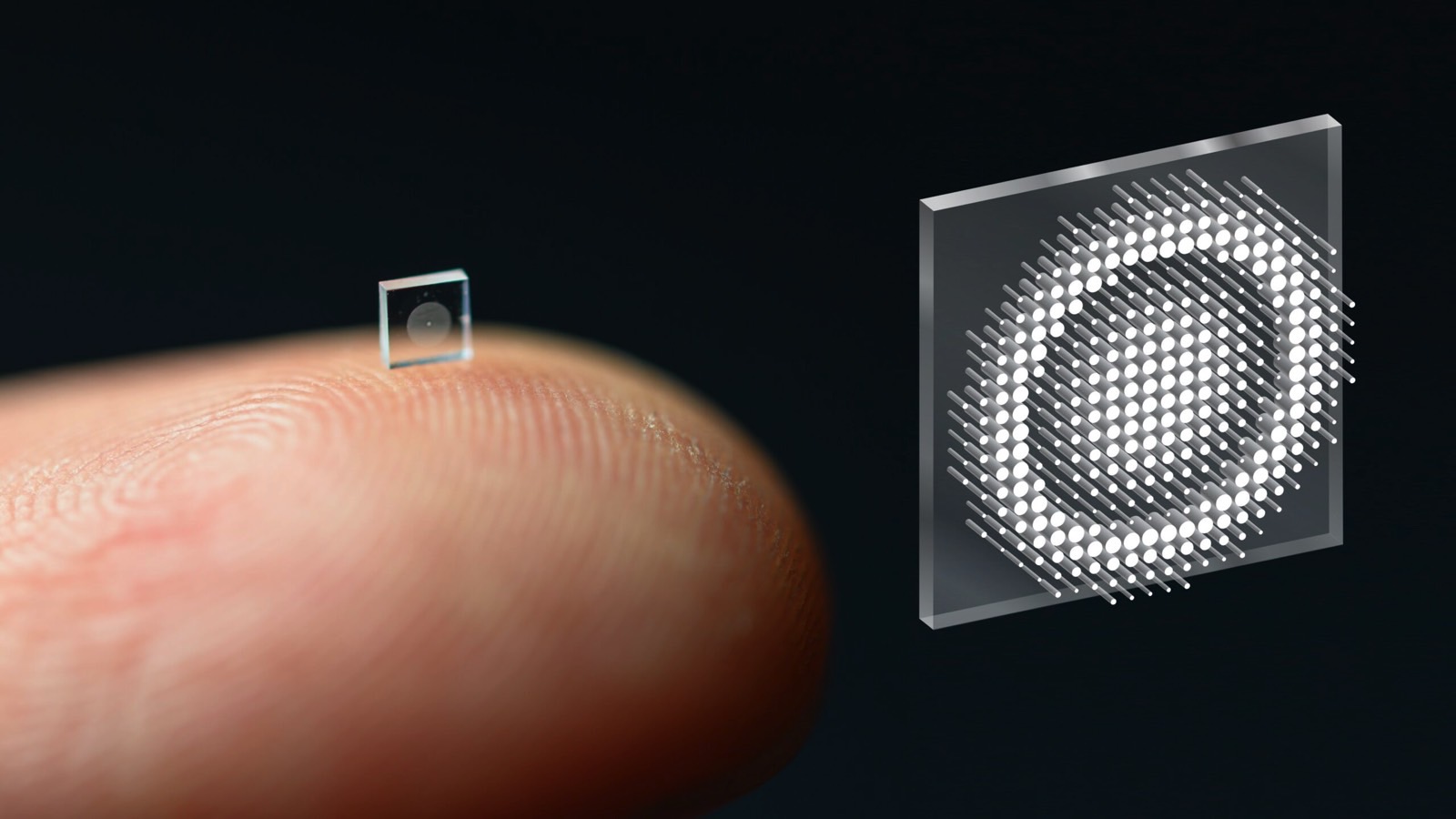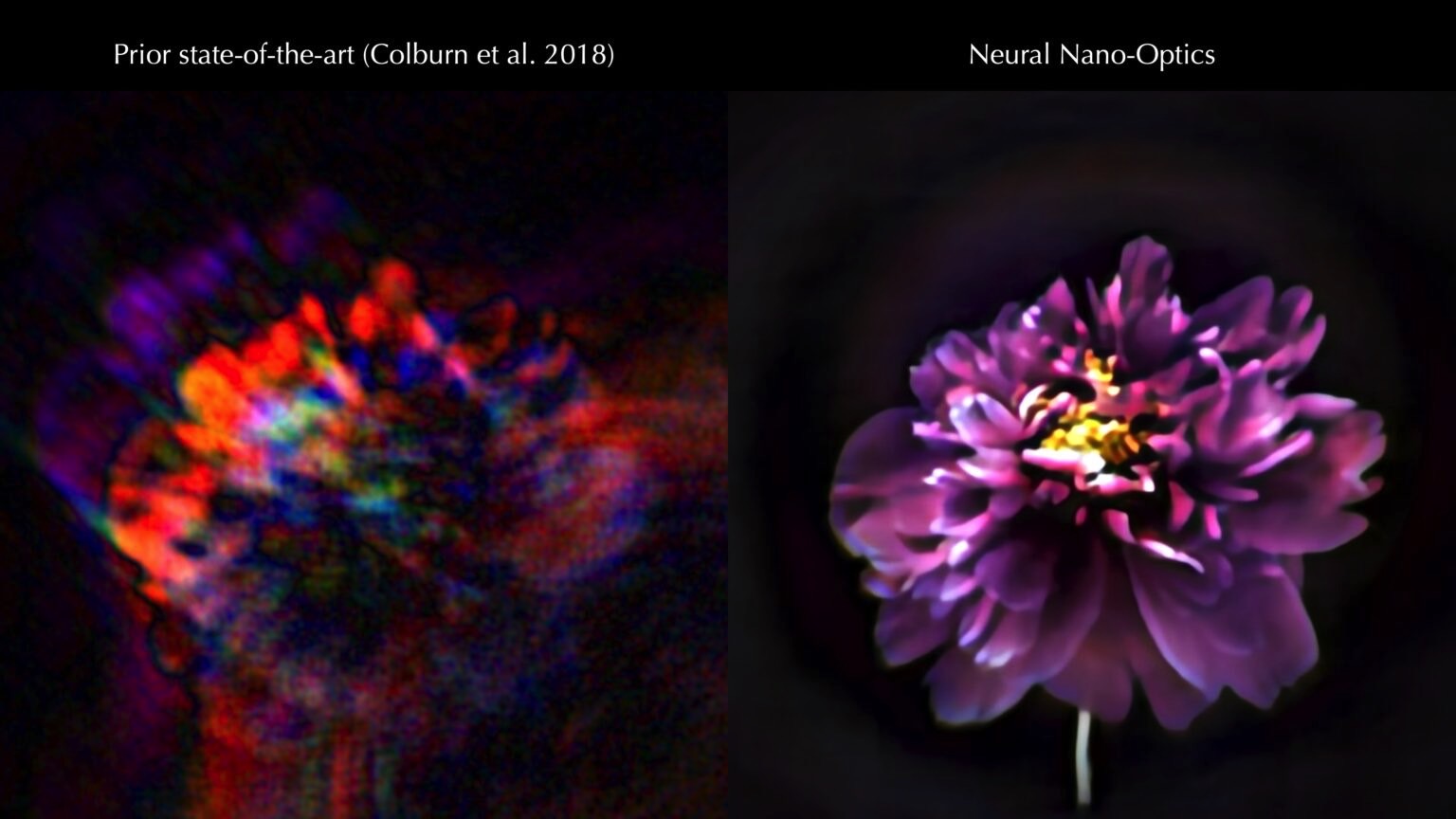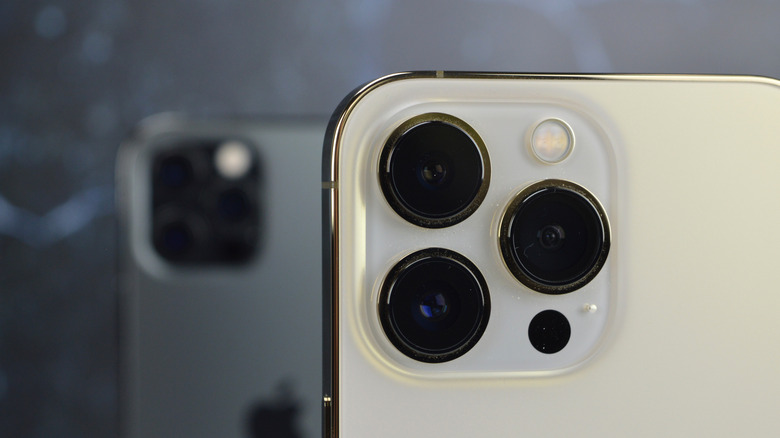Revolutionary Nano Cameras As Small As A Grain Of Salt Took These Photos
Every smartphone generation brings exciting new camera upgrades. A combination of hardware and software optimizations makes this possible, often at the expense of design. Modern phones like the iPhone feature multi-lens camera systems that are rather bulky. People complain about the camera bumps, despite their proven usefulness. One day, however, the entire surface of a phone might be made of nano cameras. Each one would be no bigger than a grain of salt. Yet they could take photos comparable to traditional cameras.
That might sound like sci-fi technology you'd see in a movie, but researchers from Princeton have made such a camera design possible. And while it might take a while for companies like Apple, Samsung, and Google to even consider such micro-cameras, the salt grain-sized cameras could be incredibly useful in fields such as medicine and robotics.
A nano camera as small as a grain of salt
Researchers from Princeton and the University of Washington have created ultra-compact cameras as small as a coarse grain of salt.
The following image shows the nano camera system that employs 1.6 million cylindrical posts that process light. The camera chip can be produced like a regular computer chip. The costs might be lower than manufacturing the standard parts that go into a traditional camera.
Such micro-sized cameras already exist, and they have uses in medicine and robotics. But they capture fuzzy, distorted images with limited fields of view. That type of nano camera is certainly not something you'd want to put on the back of an iPhone.
But the new technology, detailed in a paper in Nature Communications, solves the problem. The researchers used algorithms to take crisp images comparable to those taken by conventional cameras that are 500,000 times larger.

Nano cameras design and comparison to the size of a finger.
The metasurface replaces traditional lenses
The nano cameras replace the curved lenses present inside a regular camera with a technology called metasurface. The metasurface is just half a millimeter wide, but it includes 1.6 million cylindrical posts. Each of them is about as big as a strain of the HIV virus. But each post has a unique geometry.
"We could turn individual surfaces into cameras that have ultra-high resolution, so you wouldn't need three cameras on the back of your phone anymore, but the whole back of your phone would become one giant camera," co-author Felix Heide said in a statement. "We can think of completely different ways to build devices in the future."
These tiny posts act as optical antennas. They capture light, and then an algorithm produces the images. "With the help of machine learning-based algorithms, the posts' interactions with light combine to produce the highest-quality images and widest field of view for a full-color metasurface camera developed to date," a press release explains.
Here are some photo samples:

Previous nano camera tech (left) vs. the new neural nano-optics design (right).
It’s all in the algorithms
The researchers came up with the optical surface design of the nano camera. But they also needed to develop the algorithms that allow it to produce the photos. The image above compares previous nano cameras tech to the "neural nano-optics" design from the Princeton-Washington researchers.
The authors explained that the biggest challenge was designing the millions of nano-structures and the post-processing algorithms. They created a computational simulator to automate testing for different nano-antenna configurations. The simulation needs "massive amounts of memory and time," so they devised a model to approximate the metasurface's image production capabilities.
Scientists continue to develop the metasurface nano cameras, looking to improve image quality. They're also working on adding features like object detection and other sensing capabilities. These could come in handy in medical applications as well as robotics.
